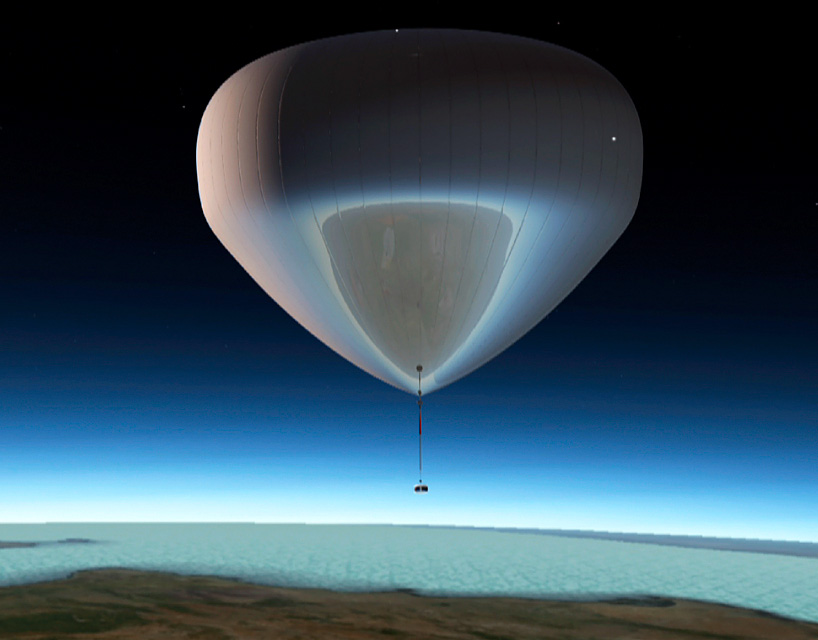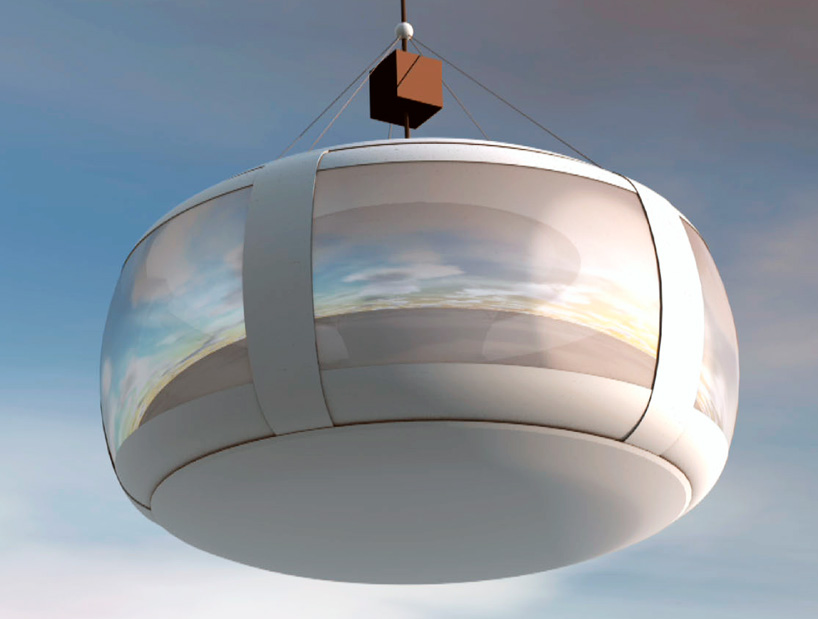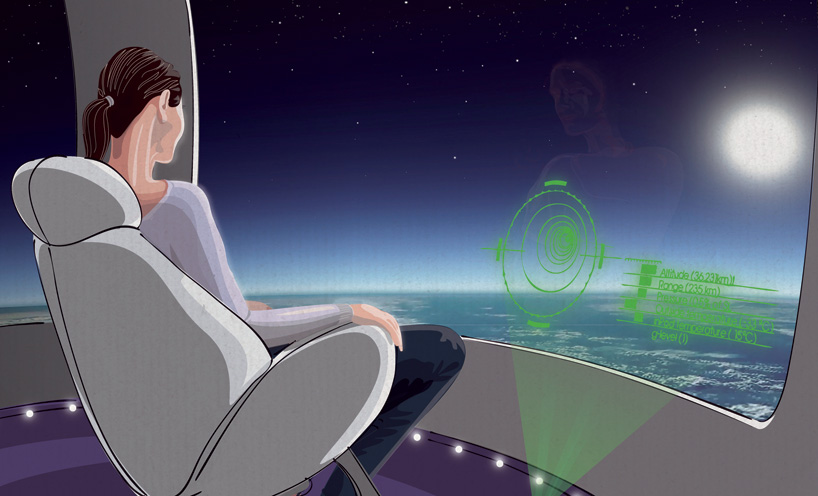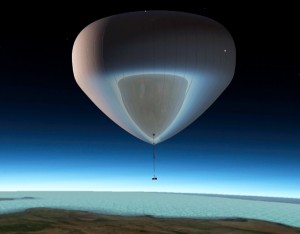Privatized space travel is all the rage right now, and with at least one commercial space port coming online soon, there is likely to be a rush of well-to-doers looking to be launched into space. But if airline travel has a big footprint, space travel has an even greater footprint. To solve that conundrum, Barcelona-based Zero2Infinity has proposed a far more environmentally sound way to get to space – via helium balloon. The Bloon Balloon is a specially crafted pod that is lifted into near space without any propellants, noise or emissions. So far the company has successfully tested scaled prototypes to altitudes up to 33km, and they expects to perform their first human test flight sometime in 2012.

The ‘bloon’ lifts off from a specially crafted inflatable dome, constructed directly onto the ground. The craft is composed of a central pod with full windows, housing up to four passengers and two pilots. A chain houses communications and navigation systems, as well as emergency landing gear, and connects the ship to a large helium balloon. The balloon is the only propellant for the system:
there are no chemical emissions and no engines or noise pollution. When released the lighter-than-air helium balloon lifts the pod off the ground and into space where you cruise at 36 km for about two hours. To come down, the helium gas is vented into space and then the balloon separates while a parafoil is deployed to control descent back down to earth. Finally, eight inflatable feet are extended from the craft to create a cushion for landing.

Bloon will not use any propellants to achieve near-space travel and creates no emissions as a result. The system is virtually silent and requires no major infrastructure for launching – only a portable and inflatable structure that can be used anywhere in the world. With a scaled prototype test under their belts, the company hopes to perform their first human test flight in 2012 in a ‘minibloon’ craft. By 2015, the company expects to be carrying human passengers up to 36 km high. The company also hopes to make use of the flights for scientific research about climate and conditions in the upper stratosphere. Tickets to ride on a 3-hr Bloon tour are estimated to cost 110,000 euro (approx $US 160,000).



Source: designboom

 Follow
Follow